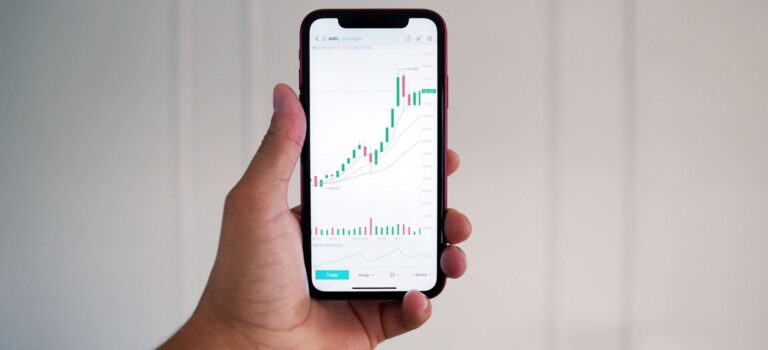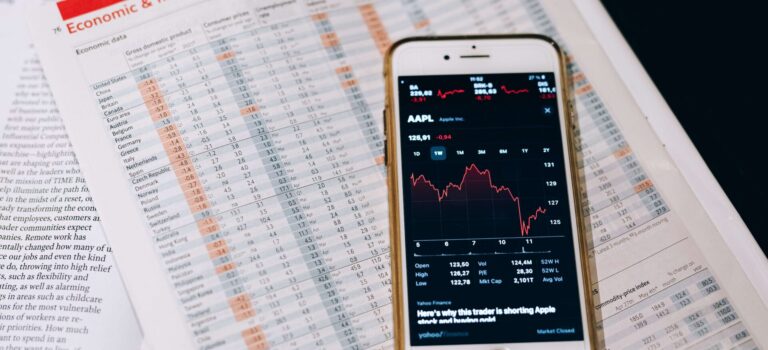The Investor Guide to Vanguard Funds for July is AVAILABLE NOW! Links to the July data files are posted below. Market Perspective: Stocks Valuations Near 25 Year Records Equities have […]


The Investor Guide to Vanguard Funds for July is AVAILABLE NOW! Links to the July data files are posted below. Market Perspective: Stocks Valuations Near 25 Year Records Equities have […]

Tariffs once again took center stage last week. Several countries received tariff letters from Washington outlining their new payment obligations moving forward. Canada was hit with a 35 percent tariff while South Africa was hit with a 30 percent tariff. Donald Trump has said that tariffs will go into effect on the first day of August, but it’s possible that further delays could occur.
Fiscal policy was another key story as the Fed released the minutes of its June meeting. It revealed a consensus that interest rates should be lowered in the future, but there is a divide when it comes to timing and scope. While some believe that the time is now to start doing so, others believe that it’s best to see what happens with the impact of tariffs over the coming months.
Inflation data for June will be released week, and it’s expected that prices increased by .3 percent over the past month. The annual inflation rate is expected to have ticked up from 2.4 percent to 2.6 percent in June. It’s likely that the final figure is going to weigh heavily on the Fed’s rate decision.
In addition to the release of the FOMC meeting minutes, unemployment claim data was made public on Thursday. That morning, it was revealed that 227,000 people sought benefits over the past seven days. Analysts had projected that 236,000 requests had been made. Last week, 232,000 new claims were made across the country.
The S&P 500 was relatively flat this week, closing up 1.65 points to finish at 6,259. This was a .03 percent increase for a market that is up 6.43 percent year-to-date. On Monday afternoon, the market made its weekly low dipping to 6,208 before reversing and largely gaining ground. On Thursday afternoon, the market reached its weekly high of 6,289.
Like the S&P 500, the Dow was also relatively flat for the week finishing down .87 percent to close at 44,371. Despite the weekly loss, the index is still up more than 4 percent for the year. The Dow followed the same pattern as the S&P this week making its low of the week on Monday afternoon and its weekly high on Thursday. For the last five days, the index ranged from 44,173 to 44,761.
Finally, the Nasdaq was also flat for the week having closed at 20,585 on Friday. This represented a gain of .52 percent for the last five trading days for the index that is up 6.6 percent through the first six months of 2025. On Monday afternoon, the market made a low of 20,333 before reversing and engaging in sideways movement through Friday.
In international news, Australia decided to keep its interest rate steady at 3.85 percent despite a cut being priced in before the news. The Royal Bank of Australia (RBA) said that it needed more time and guidance regarding inflation before making any additional cuts. New Zealand also held its key rate steady at 3.25 percent on Tuesday night. On Friday, Canada announced that its economy added 83,000 new jobs and that its unemployment rate dipped to 6.9 percent.
In the United States, the Price Producers Index (PPI) comes out on Wednesday while retail sales and unemployment figures will be released on Thursday. Great Britain and Canada are also expected to release inflation numbers this week.

The Investor Guide to Fidelity Funds for July 2025 is AVAILABLE NOW! July Data Files Are Posted Below Market Perspective: Will the Fed Cut Rates Sooner Rather Than Later? Equities extended […]

The first few days of July were interesting as the nonfarm payroll reports for June were released. There were some mixed messages in the data that caused some to question the path forward as it relates to monetary policy.
For the month of June, there were 7.77 million available jobs in the United States compared to an expected 7.32 million. This was the highest number of open positions since January when more than eight million jobs were available.
In addition, the ISM Manufacturing PMI came out on Tuesday, and it came in at 49, which was roughly in line with expectations. The report suggests that manufacturing is in a slight contraction period right now. However, the June number was higher than last month’s reading of 48.5.
On Wednesday the ADP nonfarm payroll reported the economy shed 33,000 jobs in June. Analysts had expected a gain of 99,000 jobs. It should also be noted that May’s final number was revised downward to 29,000.
However, on Thursday the Bureau of Labor Statistics (BLS) releasing its version of the nonfarm payroll report. It found that the economy added 147,000 jobs compared to an expected 111,000 prior to the release. It was noted that only 74,000 of those jobs came from the private sector while the rest were mostly related to gains made in state governments.
Unemployment claims figures for the past seven days were also released Thursday. It was revealed that 233,000 people requested benefits during the reporting period, less than the estimated 240,000 claims prior to the report’s release.
Finally, the ISM Services PMI came out late Thursday morning with a figure of 50.8, matching expectations. This means that services are still in a period of relative expansion, and the June figure represents a rebound from the somewhat shocking 49.9 reported for May.
Early this week, Jerome Powell made scheduled comments that were interpreted by some as relatively dovish. He said that July may represent an appropriate time to cut rates, but cuts would already have been underway if it weren’t for Trump’s proposed tariffs. The 90-day pause on tariffs imposed in April are set to expire on July 9.
Over the past five trading days, the S&P 500 finished up about 2 percent to close at 6,279. This is a new high for the year as well as a new all-time high for the index. On Monday afternoon, the market put in the low of the week of 6,182 before beginning a slow climb throughout the rest of the week. It would then close near the high of the week when trading halted on Thursday afternoon.
The Dow followed a similar trajectory as the S&P 500, closing up almost 3 percent over the last five trading days. It closed the week at 44,828, which is also a yearly and all-time high. For the week, the market made a low of 43,945 on Monday afternoon and closed near the high.
The Nasdaq would also finish the week significantly higher. However, unlike the other two indexes, it made its weekly low on Tuesday when it dipped to 20,113 early that morning. It would then reverse and close the week at 20,601, which is a yearly and all-time high.
The FOMC meeting minutes from the June meeting are expected to be released on Wednesday. In addition, unemployment claim data is set to be made public on Thursday. International traders may want to keep an eye on rate announcements from Australia and New Zealand.

The Flash Services PMI came in at 53.1 compared to an expected 52.9, which means that the service sector is still in a period of expansion. The Flash Manufacturing PMI was also above 50 coming in at 52 compared to an expected 51.1. In addition, the April report was revised upward to 53.7. While this may be a sign of an unexpectedly resilient economy, it could also be the result of buying done prior to the implementation of Trump’s new tariffs.
On Tuesday and Wednesday, Federal Reserve Chair Jerome Powell gave testimony in front of members of the Senate. Powell urged the need for restraint in the face of pressure from President Trump to cut rates by up to 250 basis points. He believes that evidence of inflation from those tariffs will start to appear in the data by some point in July. Also notably, he mentioned that he was in support of student loan forgiveness but had no opinion on tariffs other than he believed that they were inflationary.
On Thursday, the final GDP figures for the first quarter were made public. During the first three months of the year, the economy contracted by .5 percent compared to an expected contraction of .2 percent. However, it’s expected that the second quarter will show an improvement because of activity conducted in April. Therefore, it’s unlikely that the economy will fall into a technical recession.
Also on Thursday, unemployment claims data for the past week came out. Over the past seven days, there were 236,000 requests for benefits, roughly 10,000 fewer than the prior week. Analysts had expected 244,000 requests for benefits this week prior to the release.
On Friday, the Core PCE Price Index for May came out, and it showed that prices increased by .2 percent in May compared to an expected .1 percent. Personal income was down 0.4 percent for the past month while spending was down 0.1 percent during that same period. This may be a sign that the economy is weakening or that inflation may rise. Either way, it could alter the Fed’s projected path of two or three rate cuts over the second half of 2025.
The S&P 500 broke above 6,100 this week, which is close to both yearly and all-time highs for the index. This is in spite of the fact that the index dipped about 20 percent over a period of three weeks in April. Ultimately, this has been one of the fastest bear market cycles and recoveries in history.
The Dow has also largely recovered from its April slump and is also closing in on yearly and all-time highs. It made a weekly low on Tuesday of 42,070 before reversing and spending the next three days making gains.
In international news, Canada announced on Tuesday that its common CPI was 2.6 percent for the year while inflation overall grew by .6 percent over the past month. On Thursday, Japan announced that its inflation rate was 3.1 percent on an annual basis while retail sales were up 2.2 percent on an annual basis.
The upcoming week is likely to be a muted one given the Independence Day holiday on Friday. However, there are still some major announcements on the schedule including the ADP nonfarm payroll report on Wednesday and the Bureau of Labor Statistics (BLS) nonfarm payroll report coming out on Thursday.